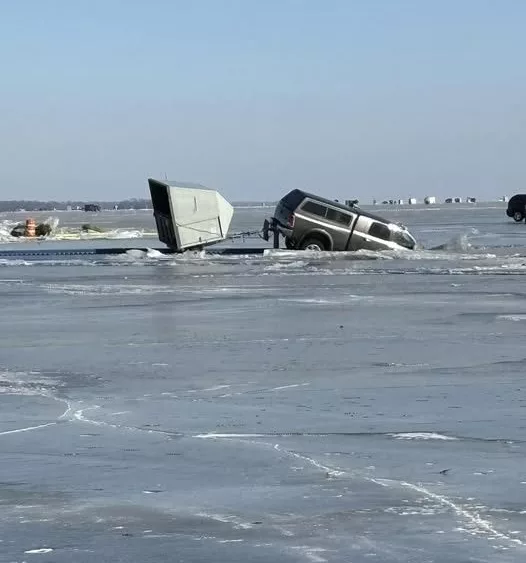PIERRE, S.D. (AP) — A brutal winter storm closed interstate highways from Arizona to Wyoming Wednesday, trapped drivers in cars, knocked out power to hundreds of thousands of people and prompted the first blizzard warning in Southern California in decades — and the worst won’t be over for several days. Few places were untouched by the wild weather, including some at the opposite extreme: long-standing record highs were broken in cities in the Midwest, mid-Atlantic and Southeast. The wintry mix hit hard in the northern U.S., closing schools, offices, even shutting down the Minnesota Legislature. Travel was difficult. Weather contributed to more than 1,600 U.S. flight cancellations, according to the tracking service FlightAware. More than 400 of those were due to arrive or depart from the Minneapolis-St. Paul International Airport. Another 5,000-plus flights were delayed across the country. In Wyoming, rescuers tried to reach people stranded in vehicles but high winds and drifting snow created a “near-impossible situation” for them, said Sgt. Jeremy Beck of the Wyoming Highway Patrol. Wyoming’s Transportation Department posted on social media that roads across much of the southern part of the state were impassable. In the Pacific Northwest, high winds and heavy snow in the Cascade Mountains prevented search teams from reaching the bodies of three climbers killed in an avalanche on Washington’s Colchuck Peak over the weekend. Two experts from the Northwest Avalanche Center were hiking to the scene Wednesday to determine if conditions might permit a recovery attempt later this week. For the first time since 1989, a blizzard warning was issued for the mountains of Los Angeles, Ventura and Santa Barbara counties, effective from 4 a.m. Thursday to 4 p.m. Saturday, the National Weather Service said. A more than 200-mile (320-kilometer) stretch of Interstate 40 from central Arizona to the New Mexico line closed due to snow, rain and wind gusts of up to 80 mph (129 kph). More than 8,000 customers were without power in Arizona.
In the northern U.S. — a region accustomed to heavy snow — more than 18 inches (46 centimeters) piled up in parts of Minnesota and Wisconsin. According to the weather service, the biggest snow event on record in the Twin Cities was 28.4 inches (72 centimeters) from Oct. 31 through Nov. 3, 1991. Temperatures could plunge as low as minus 20 degrees Fahrenheit (minus 29 degrees Celsius) Thursday and to minus 25 F (minus 32 C) Friday in Grand Forks, North Dakota. Wind chills may fall to minus 50 F (minus 46 C), said Nathan Rick, a meteorologist in Grand Forks.







